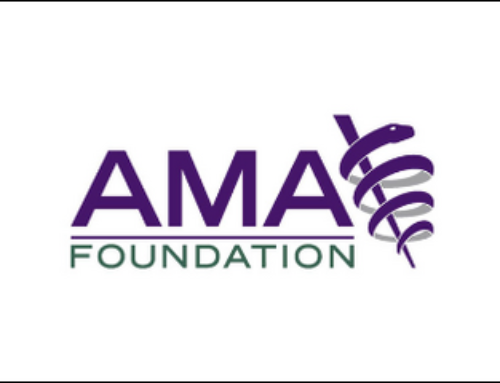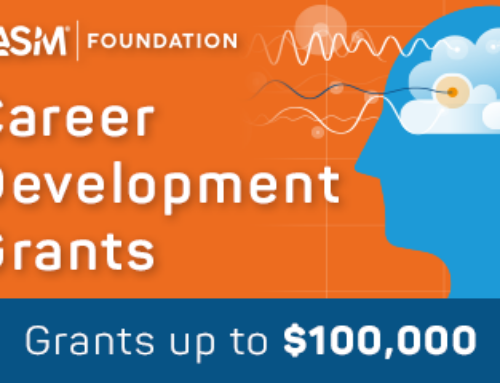We are now accepting letters of intent for the 2024 Strategic Research Grant: Central Disorders of Hypersomnolence Research. This focused funding opportunity is for projects that address research gaps in the treatment of central disorders of hypersomnolence that were identified in the 2021 published systematic review titled, Treatment of central disorders of hypersomnolence: an American Academy of Sleep Medicine systematic review, meta-analysis, and GRADE assessment and basic, translational, clinical and population research gaps identified by patient advocacy stakeholder groups.
This funding opportunity is co-funded by the Hypersomnia Foundation and Wake Up Narcolepsy.
Only applications that fit into one or more of these research domains and topic areas will be considered.
- Basic and Translational Studies for Understanding Central Disorders of Hypersomnolence
Studies designed to understand the biological process and pathophysiology of central disorders of hypersomnolence and the mechanism of action of certain treatments are needed. Examples of research topics that fall under basic translational studies for understanding central disorders of hypersomnolence include, but are not limited to:
- Research to understand the mechanisms of hypersomnia and excessive daytime sleepiness in specific conditions, so that more targeted therapies can be developed.
- Understanding the role of the innate and adaptive immune system in the development of narcolepsy and other central disorders of hypersomnolence should herald clinical trials in immune modulating treatments that could attenuate disease severity.
- Understanding the molecular architecture of the human orexin receptor to inform development and testing of orexin specific therapies.
- Mechanistic data for understudied conditions like Kleine-Levin syndrome, idiopathic hypersomnia, narcolepsy type 2 and hypersomnia due to specific medical and psychiatric disorders for targeted drug development and testing.
- Research that investigates whether data and findings from published basic science sleep research are relevant to or can be applied to further the understanding, diagnosis, or treatment of central disorders of hypersomnolence.
- Improvement of Diagnosis for Central Disorders of Hypersomnolence
Identification of central disorders of hypersomnolence currently poses a challenge, and there is a need to improve its diagnosis in sleep medicine practice and routine clinical practice. Examples of research topics that fall under the improvement of diagnosis for central disorders of hypersomnolence include, but are not limited to:
- Development of novel diagnostic tools and methodologies.
- Develop extended sleep studies needed for better diagnosis of idiopathic hypersomnia.
- In-house sleep clinic protocols for extended sleep studies to enable better phenotyping of hypersomnias (long sleep type, disrupted sleep, total 24+ hour sleep time).
- Evaluate home extended sleep studies, wearable EEGs/sleep monitors, etc.
- Pharmacologic Treatments for Central Disorders of Hypersomnolence
There is a need for studies that directly compare different medications used to treat central disorders of hypersomnolence across the lifespan. Examples of research topics that fall under pharmacological treatments for central disorders of hypersomnolence include, but are not limited to:
- Comparative-effectiveness studies of new medications that enter the market against standard treatments so physicians and patients can factor this information into treatment decisions. This includes studying treatment options other than stimulants for idiopathic hypersomnia since some patients cannot tolerate stimulants.
- Well-designed studies evaluating the following:
- Commonly used traditional stimulants for central disorders of hypersomnolence, and/or
- Selective serotonin reuptake inhibitors/serotonin and norepinephrine reuptake inhibitors cataplexy treatments for people with narcolepsy type 1.
- Prospective clinical trials for drugs widely used for treating cataplexy. The low cost of this therapy is attractive, and it is already commonly used across the world.
- Research and develop front-line treatments for narcolepsy and other central disorders of hypersomnolence.
- High quality randomized controlled trials for pediatric patients with central nervous system hypersomnias since children and adolescents may react differently to medications for hypersomnolence than adults, and side effect profiles can vary based on patient age.
- Studies to discover how oxybates and other hypersomnia medicines work and to help predict which particular people with central disorders of hypersomnolence will most likely benefit from each of these medicines.
- Patient-centered Outcome Measures for Central Disorders of Hypersomnolence
There is a need to identify, develop and validate patient-centered outcome measures that can be used to evaluate and monitor important outcomes in people with central disorders of hypersomnolence. Examples of research topics that fall under patient-centered outcome measures for central disorders of hypersomnolence include, but are not limited to:
- Identify validated outcome measures that most closely reflect patient priorities in order to develop and validate disease-specific patient-reported outcome measurement tools, and to delineate clinical significance thresholds to harmonize future research and facilitate future clinical guideline development.
- Research focused on quality-of-life measures, both cross-sectional and longitudinal, to help the field better understand aspects of the disease most disruptive to people’s lifestyles.
- Evaluate treatments for narcolepsy and other central disorders of hypersomnolence in regard to patient satisfaction, ability to adhere and continue treatment, and overall quality of life.
Note: Proposals are encouraged to use standardized, validated assessments, which will permit clinicians and patients to compare clinical trial data to get an estimate of comparative effectiveness
- Behavioral and Psychological Treatments for Central Disorders of Hypersomnolence
Reliance on medications alone to treat central disorders of hypersomnolence is likely insufficient without broader guidance on behavioral and psychological influences on symptom management. Examples of research topics that fall under behavioral and psychological treatments for central disorders of hypersomnolence include, but are not limited to:
- Evaluating cognitive behavioral therapy (in-person, online), other modes of therapy, sleep scheduling, naps for furthering medication effects and/or demonstrating independent treatment benefit.
- Disparities and Health Access Equity Research for Central Disorders of Hypersomnolence
It is well-known that sleep disturbances and deficiencies affect disadvantaged populations, which lead to disproportionate sleep health disparities in the United States. However, little is known on how to best find, diagnose, and treat individuals with central disorders of hypersomnolence, particularly those from underrepresented communities. This is further hampered by lack of knowledge on central disorders of hypersomnolence among health care providers and the public, which can lead to delayed diagnosis, treatment, and support for people with central disorders of hypersomnolence. Examples of research topics that fall under disparities and health access equity research for central disorders of hypersomnolence include, but are not limited to:
- Develop a sleep disorder screening tool that is inclusive of all central disorders of hypersomnolence and can be used by the public, for example, on a website, where patients can answer a list of questions and receive information on a possible diagnosis, including information on how to follow up with a sleep medicine specialist and connect with patient advocacy groups.
- Any screening tool developed should consider whether there is a need for customization for people from diverse backgrounds.
- Delivery of the tool may differ by group.
- Quantify access to diagnosis and treatments for less common sleep disorders (e.g., central disorders of hypersomnolence) for people from diverse backgrounds.
- Initiatives to accurately collect demographic fields in electronic health records to measure current diversity and health equity and lay foundation for further health equity research and improvement.
- Increase outreach to historically underserved populations, both patients and future providers.
Letters of intent are due October 23, 2023. For full information on eligibility and this funding opportunity, visit: https://foundation.aasm.org/strategic-research-award/






